That Time I Built Biotech Models & Somehow Ended Up on Stage in Paris
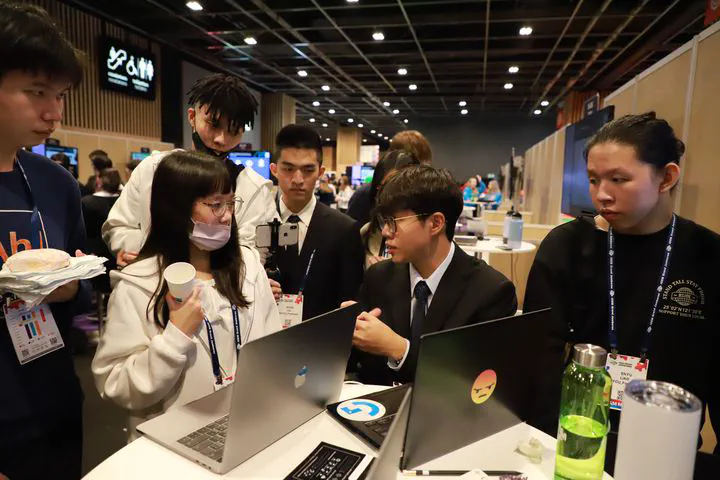 Discussing during the jamboree
Discussing during the jamboree
Paris, France
🧬 What Event is iGEM and Why Was I There?
Picture this: Hundreds of college students from around the world, all pretending they know exactly what they’re doing while building genetically engineered… stuff. That’s iGEM! The International Genetically Engineered Machine competition is basically where biology meets engineering meets sleep deprivation.
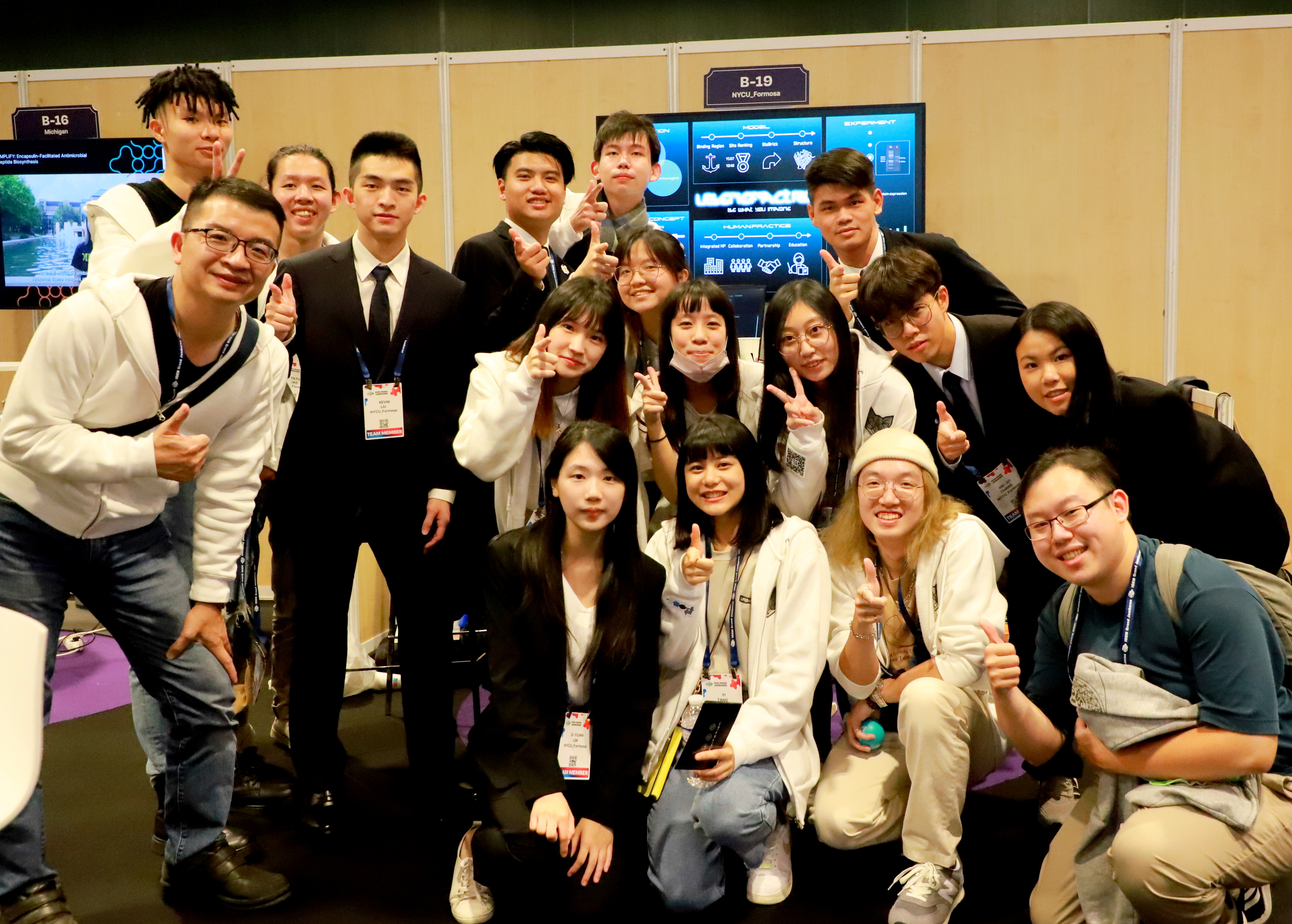
NYCU_Formosa Team - these folks somehow trusted me!
Our team (NYCU_Formosa) decided to create a customizable biomaterial called Ubenefactrix. Think of it as biological LEGO that you can 3D print into whatever structure you want, then add different proteins to it for different functions. Cool, right?
(Spoiler: I quickly learned that my initial confidence was about as well-founded as thinking calculus is just advanced addition and subtraction.)
🧳 My Accidental Leadership Journey
Somehow, I ended up as the Dry Lab Leader. “Dry Lab” means I worked with computers and models rather than actual slimy biological stuff (though I did end up doing lab work too, because why not make life more complicated?).
Our computational dream team had five distinctive characters:
-
Me (Rex): The “Modeling Magician turned Accidental Biologist” – Led the Tyrosine Binding Model development and later ventured into the lab to battle with red, green, and blue fluorescent E. coli (spoiler: the blue ones were particularly uncooperative).
-
Heidi: The “Biology Whisperer” – Rescued me from lab exhaustion just before I could use petri dishes as pillows. Had an uncanny ability to give me that “let the professionals handle this” look that saved our project.
-
Boyi: The “Pixel Alchemist” – Created all those stunning animations on our website with his magical hands. Also dabbled in the ANCHOR model when pure design work wasn’t challenging enough.
-
Kevin: The “Color Mixing Maestro” – Developed complex formulas to predict fluorescent protein combinations while the rest of us were stuck at “blue + yellow = green” level understanding.
-
Enfu: The “Web Architect and Math Hero” – Worked seamlessly with Boyi on the website and tackled the scariest equations with gleaming eyes. Often said “it’s actually quite simple” before writing mathematical hieroglyphics.
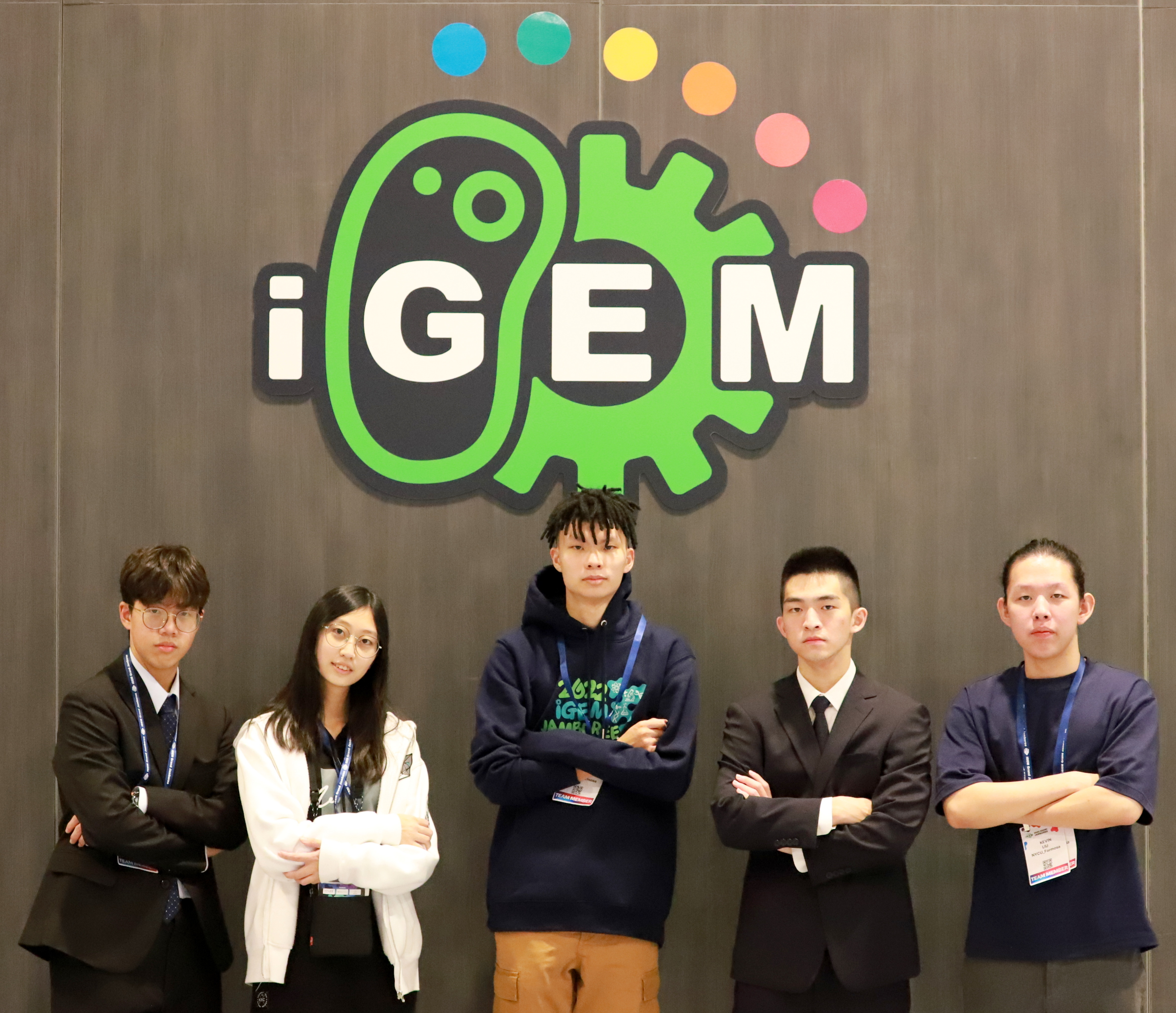
Looking professional but secretly exhausted (From left to right: Rex, Heidi, Boyi, Kevin, Enfu)
We spent countless nights creating mathematical models with fancy names like “Tyrosine Binding Model” and “Color Mixing Model.” The first one predicted how our biomaterial would stick together (imagine predicting how velcro works at the molecular level), and the second one helped us visualize how different proteins would mix together (essentially a sophisticated version of kindergarten color-mixing games).
🧪 From Models to Reality: Blue Fluorescent Bacteria Rebellion
The jump from comfortable computer screens to the lab felt like being teleported from a video game into an actual battlefield. My first time in a lab coat, facing those strange-glowing instruments and skull-labeled reagents, I silently prayed I wouldn’t accidentally create a supervirus.
My seemingly simple task: cultivate three differently colored fluorescent E. coli - red, green, and blue. Red and green behaved nicely, but blue? Those became my nemesis. No matter how I adjusted temperatures, nutrients, or even pleaded with the petri dishes (yes, I actually did this), those blue bacteria stubbornly refused to glow.
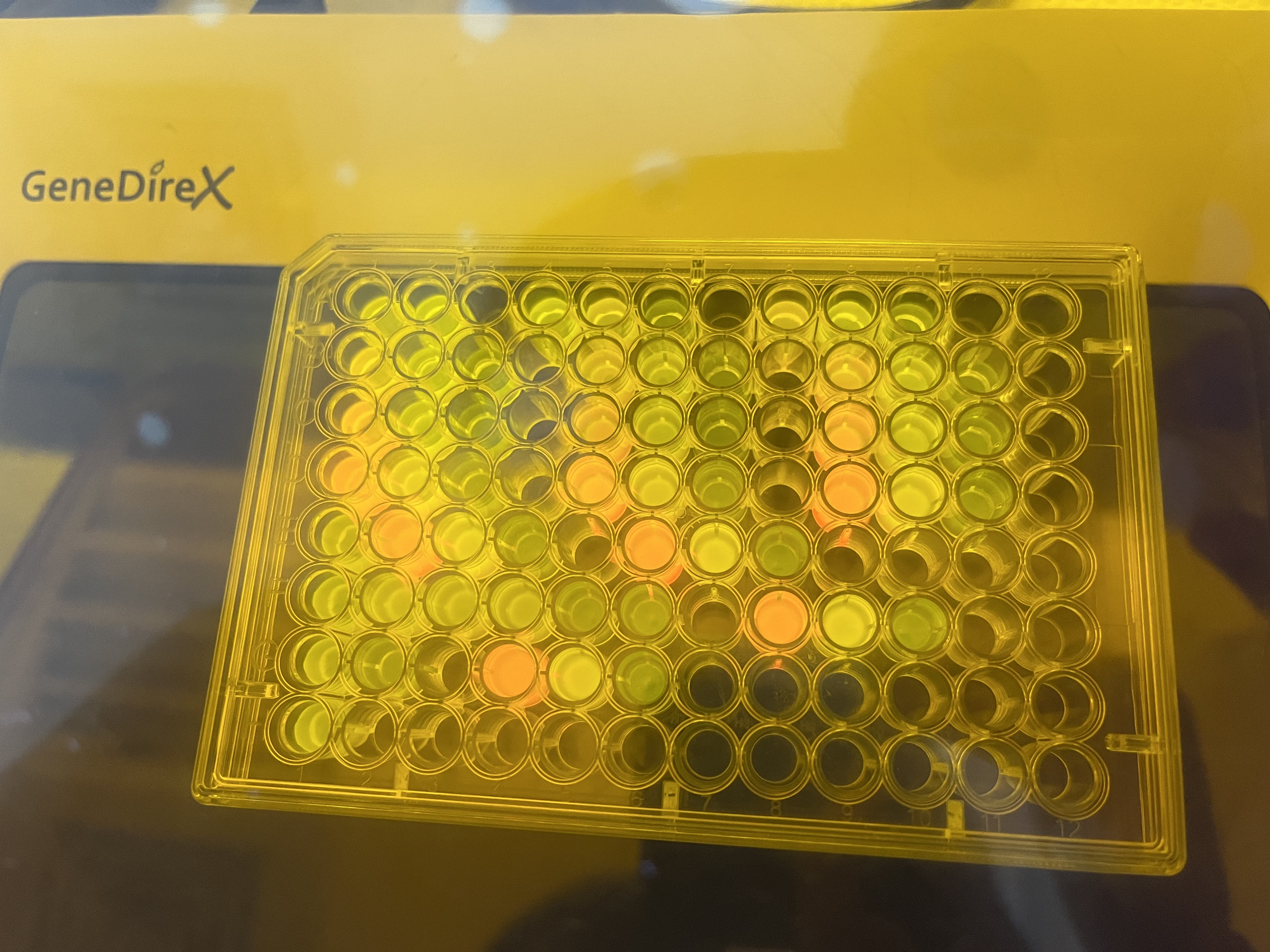
These colorful microplates document my love-hate relationship with blue fluorescent proteins
At 3 AM in the eerily quiet lab, staring at my 18th batch of non-responsive cultures, I nearly teared up. Were these blue E. coli holding a personal grudge against me?
Thankfully, Heidi swooped in to share the lab work. She taught me that pipettes aren’t for blowing bubbles, centrifuges aren’t distant relatives of washing machines, and most importantly – not all clear liquids can be mixed together randomly.
Despite the blue bacteria’s continued rebellion, we managed to validate our model’s accuracy for the red and green variants. This battle taught me that in biology, you’re not working with predictable code, but negotiating with “opinionated” living organisms – and sometimes, they simply won’t listen.
🎤 “And Now, Our Chief Engineer…”
The grand finale was presenting at the Jamboree in Paris. While I had traveled abroad before, this was my first international scientific conference and first time presenting in English on a global stage. The pressure was immense.
Our presentation team went into hardcore training mode the week before the finals. Discussing content during the day, editing slides in the evening, and rehearsing speeches at midnight. We even practiced on tour buses while sightseeing, quizzing each other, correcting pronunciations, and fine-tuning our delivery.
The night before our presentation, I practiced in front of the mirror until my lips went numb, mentally playing every possible failure scenario: forgetting words, stuttering, being unable to answer judge questions, and even tripping on stage (don’t laugh, it was a genuine fear).
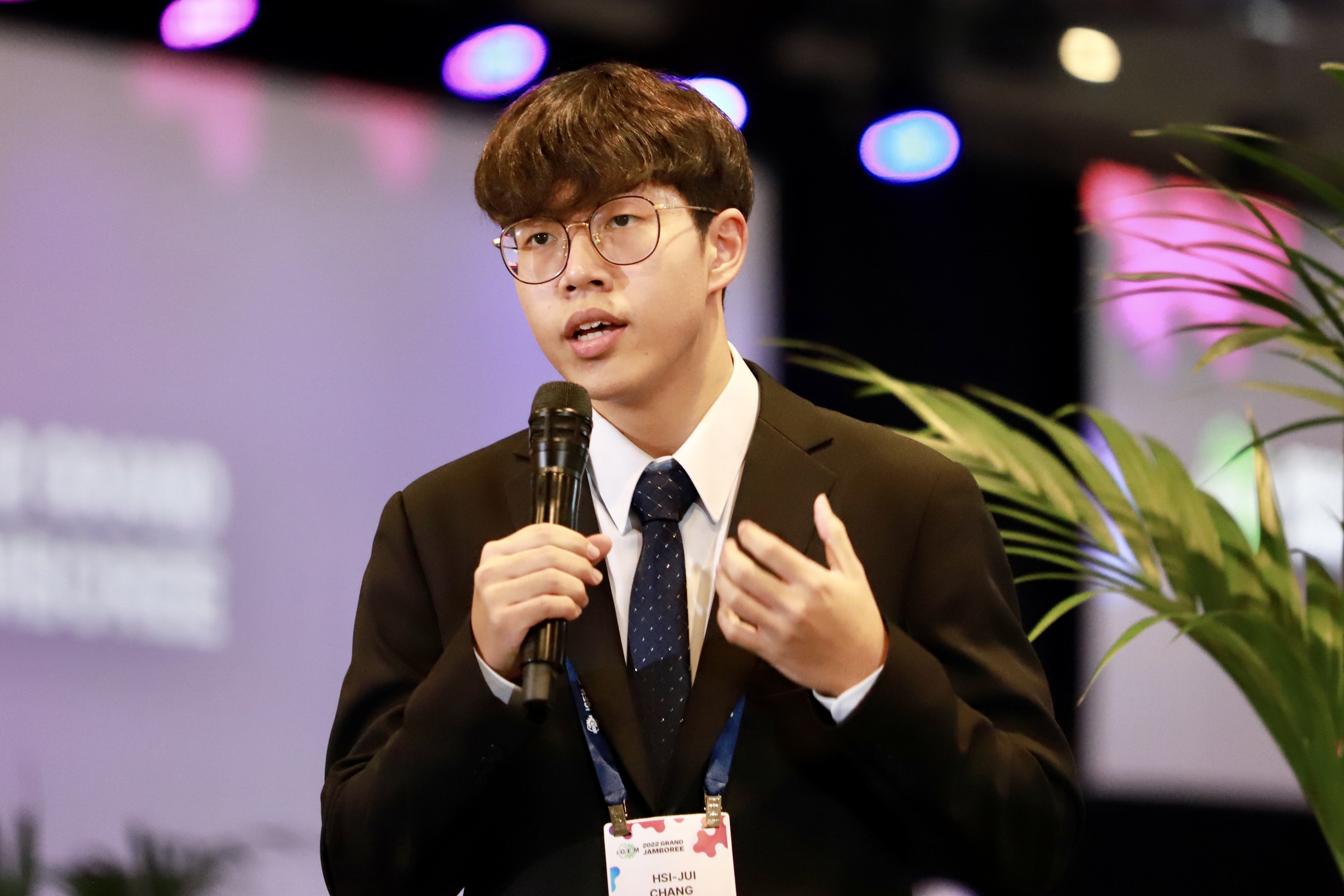
Looking calm but mentally rehearsing 800 different escape routes
The competition had two presentation formats: one open speaking session at the exhibition area for all participants and visitors, and another in a small conference room specifically for judges with a Q&A session.
When the time came, our five presenters executed a perfect relay, smoothly transitioning from one speaker to the next. When my turn came to explain our models, the previous days’ nervousness mysteriously vanished, replaced by a focused immersion. The judges seemed genuinely interested in our work, and there weren’t many questions during the Q&A – which we later guessed might mean they were quite satisfied with our explanations!
🥇 We Won Gold! (And Didn’t Faint on Stage!)
Against all odds, we:
- Created models that actually worked
- Built a cool biomaterial
- Explained it coherently to judges
- Won a Gold Medal
- Got nominated for Best Biomanufacturing
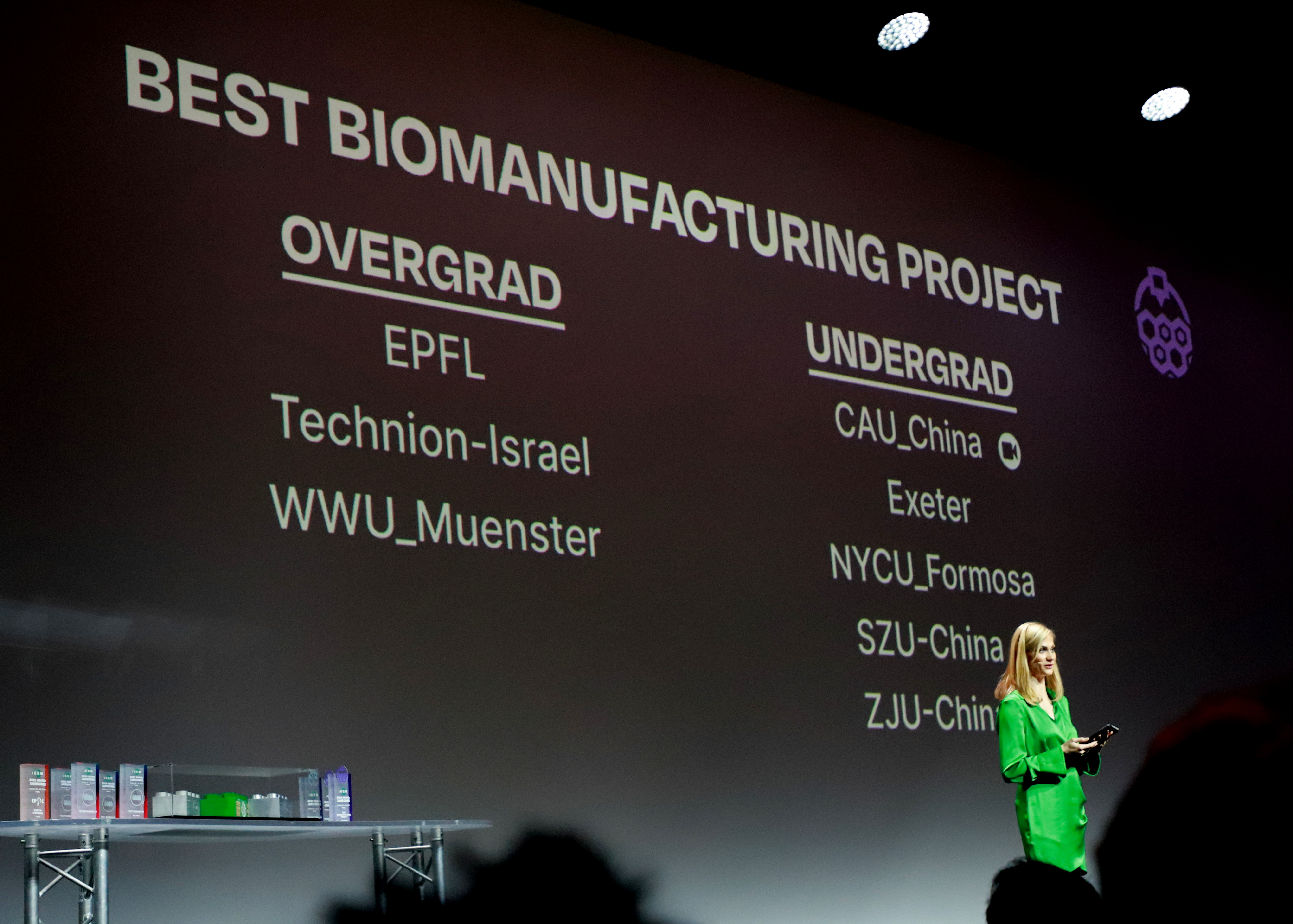
We (NYCU_Formosa) are NOMINATED as BEST Biomanufacturing!!!
But honestly, the real victory was working with the most amazing team ever and somehow making science both fun AND functional. My Dry Lab crew made the long nights of debugging code and troubleshooting models feel like a weird, nerdy adventure rather than work.
🔥 What I Actually Learned
- Biology experiments can actually be fun, especially once you stop fearing reagents with weird names
- Your biggest enemy in public speaking isn’t the audience, but that little voice in your head saying “you’re going to mess up”
- No problem is unsolvable with enough sleepless nights; if that doesn’t work, pull another all-nighter
- The power of teamwork exceeds any model, especially during collective panic
- The greatest scientific discoveries often begin with “Huh, that’s not what I expected to happen”
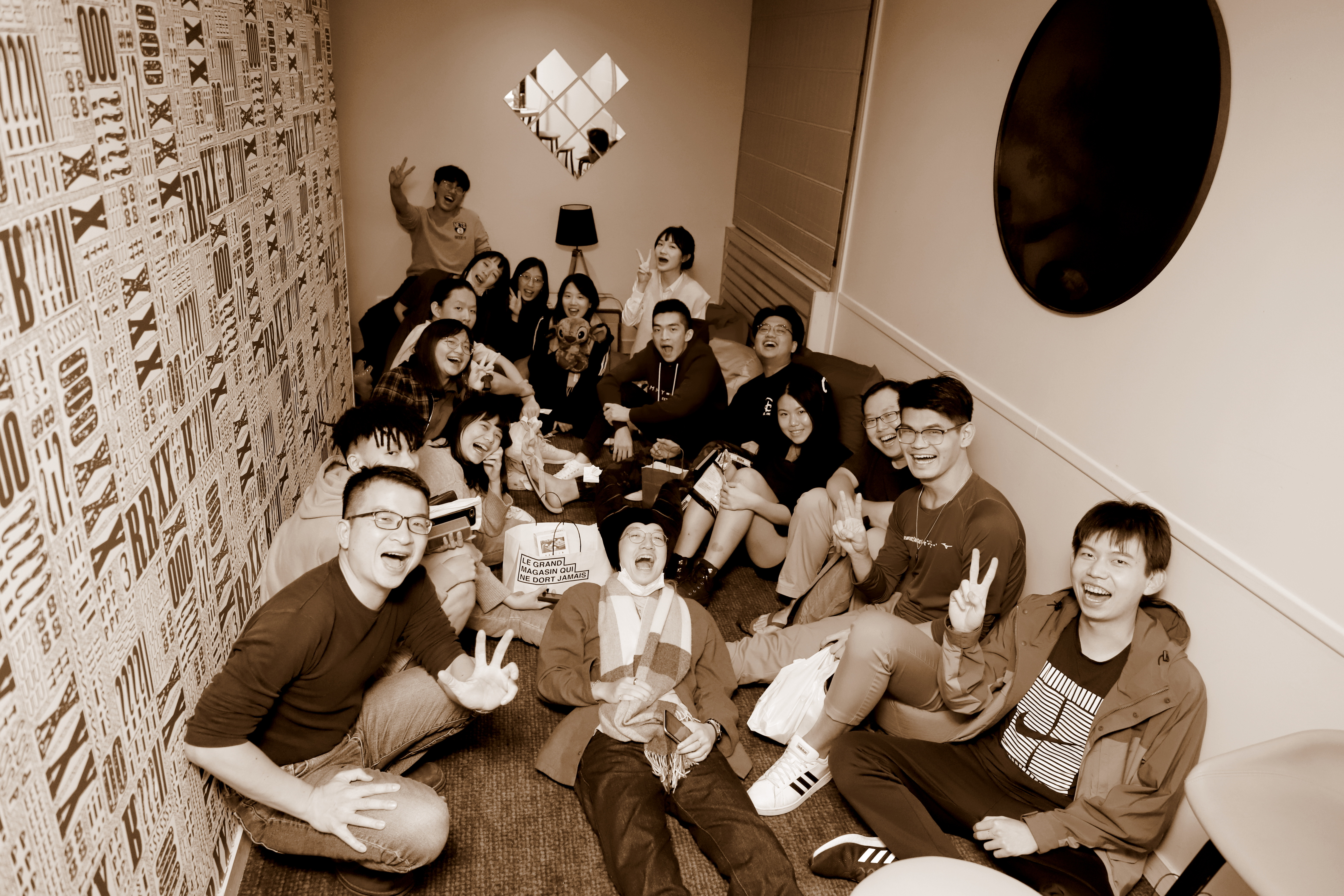
These people shared the craziness, the all-nighters, the laughter, and ultimately, a gold medal with me
From being a computational modeling enthusiast with minimal biology knowledge to confidently explaining our work on an international stage, this journey completely transformed how I see my own capabilities. It taught me that sometimes the best growth comes from stepping outside your comfort zone and facing unfamiliar challenges, until one day, you look back and are amazed by how far you’ve come.